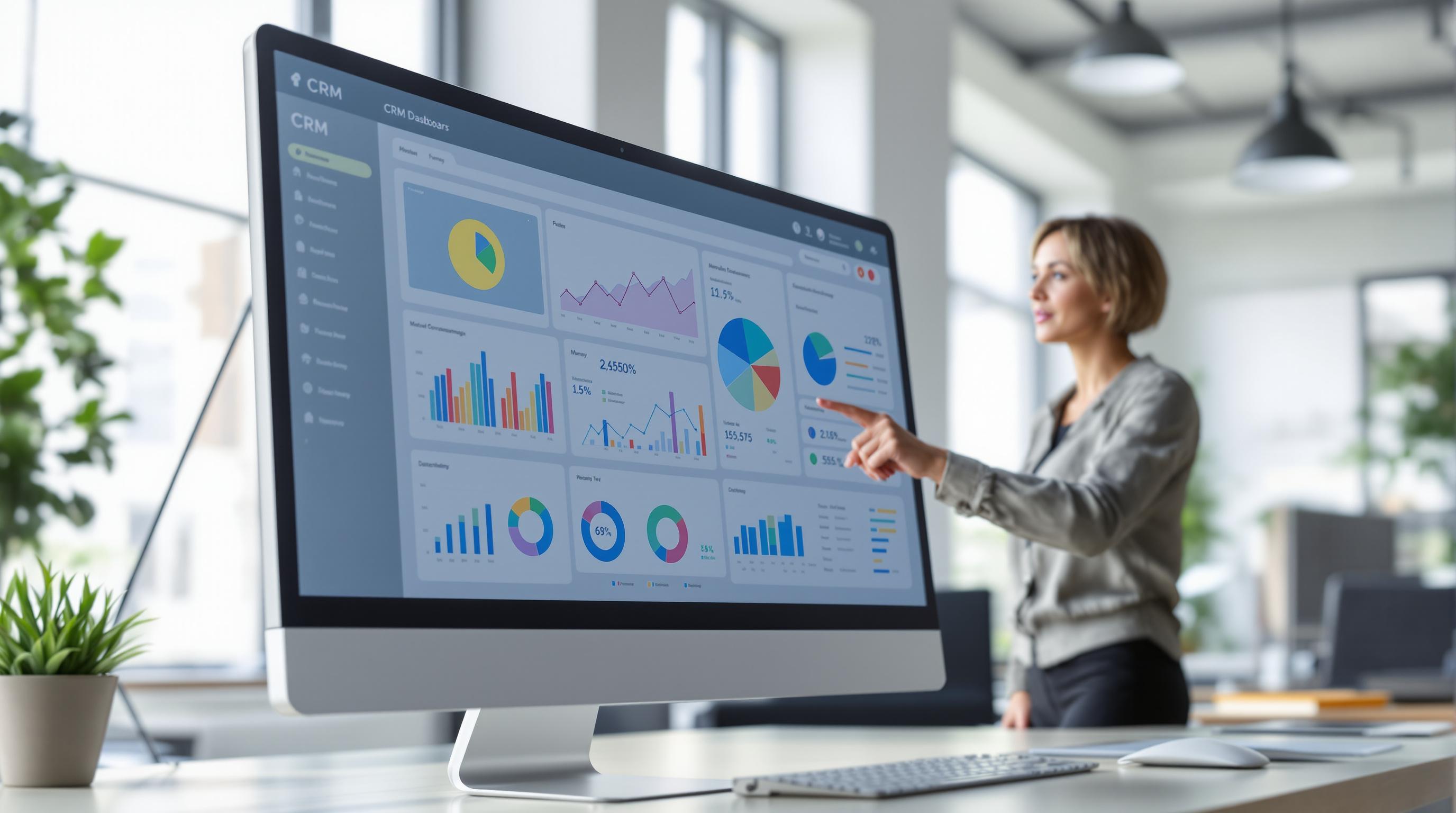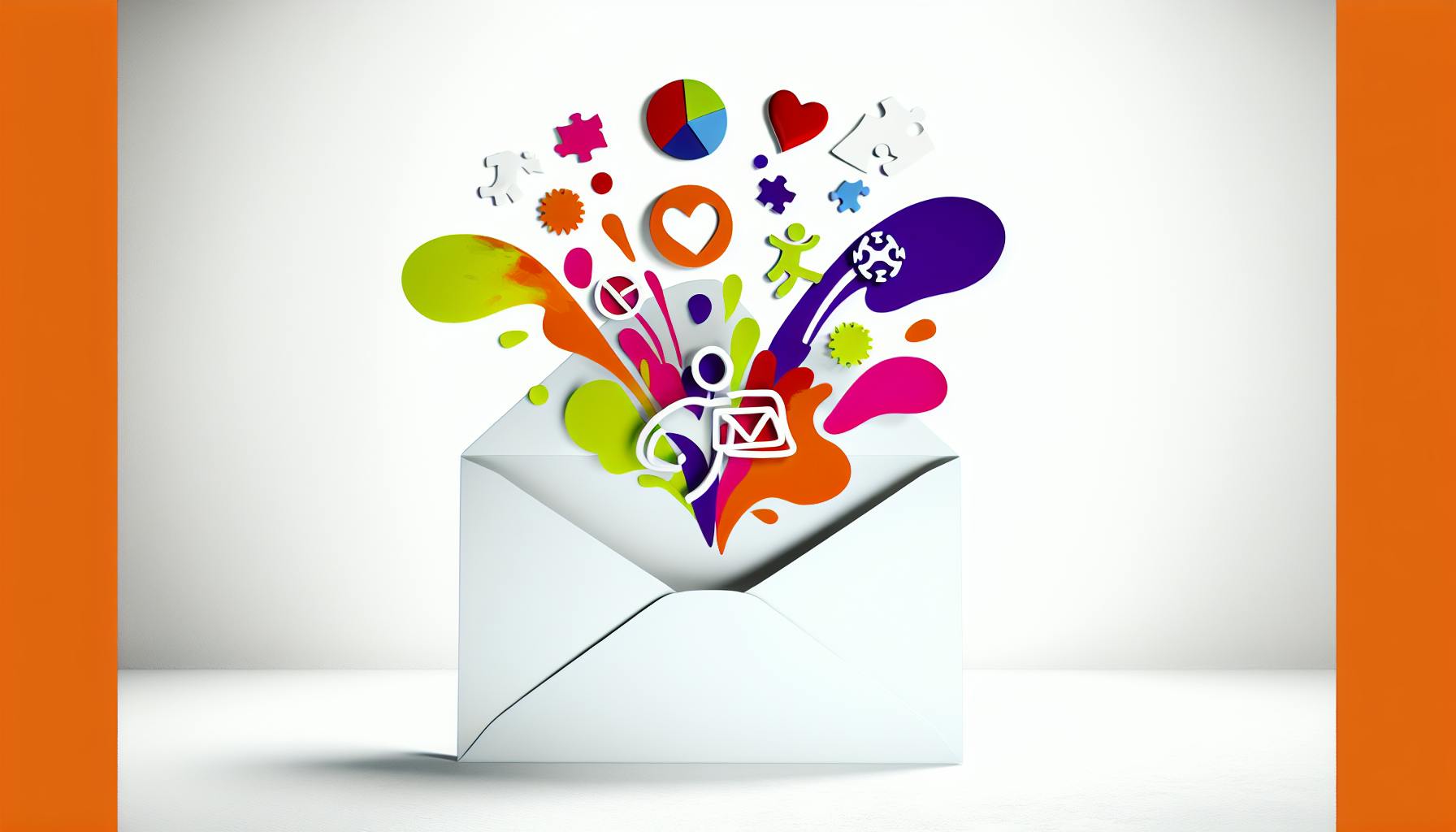CRM systems are essential tools for managing customer relationships, but their features and strategies differ significantly between B2B and B2C businesses. Here's a quick breakdown:
- B2B CRMs focus on managing complex, long-term relationships with multiple stakeholders. They emphasize account hierarchies, detailed tracking, and tools like proposal management and forecasting.
- B2C CRMs handle high transaction volumes and quick purchase decisions. They prioritize automation, customer segmentation, and omnichannel communication.
Quick Comparison
| Aspect | B2B CRM | B2C CRM |
|---|---|---|
| Decision Process | Multiple stakeholders, long cycles | Individual buyers, short cycles |
| Sales Focus | Relationship-driven, high-value | Transactional, emotion-driven |
| Automation | Workflow-focused, pipeline tracking | Marketing campaigns, real-time |
| Data Management | ROI tracking, account hierarchies | Real-time insights, segmentation |
| Core Features | CPQ tools, proposal tracking | AI-driven personalization |
Takeaway: Choose a CRM that aligns with your sales model. B2B requires tools for complexity and stakeholder management, while B2C demands speed and scalability.
B2B CRM: Managing Complex Sales Cycles
B2B Sales Process Elements
B2B sales cycles often last 4 to 6 months [5] and involve 6–10 decision-makers [3]. These extended timelines stem from thorough evaluations, budget discussions, and tailored solutions. Managing relationships effectively becomes critical in this scenario.
A successful B2B sales process hinges on several key elements:
| Process Element | Key Focus Areas | Impact on Sales Cycle |
|---|---|---|
| Stakeholder Management | Tracking multiple decision-makers, leveraging CRM tools | Close rates nearly double when multiple stakeholders review proposals [4] |
| Value Communication | Presenting customized solutions | Helps justify lengthy evaluation periods |
| Relationship Building | Developing long-term engagement strategies | Facilitates complex purchase decisions |
| Documentation | Managing proposals and quotes | Automated reminders lead to 10% higher close rates [4] |
These elements highlight the importance of specialized CRM features to navigate the complexities of B2B sales.
Must-Have B2B CRM Features
Modern B2B CRMs need advanced tools to handle intricate sales processes. Key features include:
- Detailed tracking: Offers visibility into each prospect's stage in the sales funnel.
- Automation workflows: Keeps leads engaged during extended nurturing phases.
- Forecasting tools: Predicts customer behavior and financial outcomes.
- CPQ applications: Simplifies configuration and pricing for complex products.
- Quote management: Reduces errors in complex orders.
These capabilities ensure smoother operations and better outcomes in managing long sales cycles.
HubSpot and Pipedrive in Action

Platforms like HubSpot and Pipedrive excel in handling complex sales by promoting transparency and engaging multiple stakeholders effectively. To get the most out of your B2B CRM, consider these strategies:
- Share Clear Information: Provide concise, shareable product details that stakeholders can easily pass along.
- Emphasize Value Consistently: Reiterate key benefits and differentiators throughout the sales process to ensure decision-makers present your solution accurately.
- Tailor Demonstrations: Be ready to offer multiple, personalized product demos to address the unique concerns of each stakeholder.
B2C CRM: High-Volume Customer Management
B2C Sales Challenges
B2C companies handle thousands of transactions daily, which makes delivering personalized experiences at scale a tough task.
| Challenge | Impact | Solution Requirements |
|---|---|---|
| High Transaction Volume | Heavy daily workload | Real-time processing |
| Quick Decision Cycles | Instant purchase decisions | Automated responses |
| Multiple Communication Channels | Disconnected interactions | Unified platform |
| Customer Data Management | Overwhelming data | Advanced segmentation tools |
| Personalization at Scale | Tailored targeting | AI-driven automation |
These challenges highlight the need for specific CRM tools and features, which are outlined below.
Core B2C CRM Functions
Effective B2C CRM systems tackle these challenges with essential features like:
-
Customer Segmentation Tools
Advanced search options allow businesses to group customers based on demographics, location, and even psychological traits [2]. -
Omnichannel Communication
Seamless integration across email, SMS, social media, and chat ensures consistent engagement no matter the platform [7]. -
Automated Marketing Workflows
Automation takes care of repetitive tasks like cart reminders, follow-ups, and product suggestions, keeping customers engaged without adding extra workload for employees.
Dripify and Octopus CRM Examples

Top platforms like Dripify and Octopus CRM show how automation and segmentation can simplify B2C customer management:
-
Dripify's Features:
- 24/7 customer support
- Continuous operation for uninterrupted service
- Advanced segmentation and sentiment analysis
- Calendar-based reminders for timely follow-ups [8]
-
Octopus CRM's Approach:
- Automates LinkedIn interactions
- Handles bulk connection requests
- Simplifies automated messaging
- Scales efficiently without high costs [9]
Brands like H&M and Nordstrom also utilize CRM tools to refine customer experiences. H&M uses purchase history to create personalized offers, while Nordstrom relies on automated cart recovery campaigns to boost sales [10]. Dripify mimics human behavior with randomized activity patterns, and Octopus CRM ensures steady, automated engagement [9].
Related video from YouTube
sbb-itb-8aac02d
B2B vs B2C CRM: Direct Comparison
CRM systems need to address the specific demands of B2B and B2C sales. Here's a closer look at how they differ.
Sales Cycle Differences
The sales cycles for B2B and B2C are quite distinct. For B2B, new customer sales typically take 3–6 months, while sales to existing customers average about one month[11]. In the SaaS sector, HubSpot research highlights a clear link between contract value and sales cycle length: deals under $5,000 close in roughly 40 days, but deals over $100,000 can take up to 170 days[11].
| Aspect | B2B CRM | B2C CRM |
|---|---|---|
| Decision Process | Involves multiple stakeholders (6-10); longer evaluation | Individual buyers; quicker decisions |
| Contact Management | Uses account hierarchies | Focuses on individual leads |
| Sales Focus | Builds relationships; solution-oriented | Transactional; emotion-driven |
| Pipeline Structure | Complex and multi-stage | Simple and short-term |
These differences in the sales cycle also shape the way data and analytics are approached.
Data and Analytics Needs
B2B and B2C CRM systems take very different approaches to data and analytics. B2B CRMs focus on tracking ROI over the long term and managing engagement across business accounts[1]. On the other hand, B2C CRMs prioritize real-time insights to quickly adjust to changing market trends[1].
These contrasting needs also influence how automation is implemented.
Automation Requirements
Automation plays a different role in B2B and B2C CRM setups. B2B systems often require advanced workflow automation to handle complex, long-term relationships. For example, Salesflare automates data entry and relationship tracking, helping businesses add $1 million in annual revenue[12].
For B2C, automation typically focuses on:
- Processing large transaction volumes
- Segmenting customers automatically
- Delivering real-time responses
- Managing large-scale marketing campaigns
In contrast, B2B automation emphasizes:
- Tracking progress through pipeline stages
- Managing account relationships
- Automating proposals and invoices
- Coordinating team workflows
While B2C CRMs handle a high volume of smaller transactions with standardized tools, B2B CRMs focus on fewer, more complex relationships that demand tailored automation solutions[6].
Selecting Your CRM Approach
Business Model Analysis
Take a close look at your sales process. Building on the differences between B2B and B2C, consider how these factors shape your CRM strategy:
| Business Aspect | B2B Focus | B2C Focus |
|---|---|---|
| Contact Management | Account hierarchies | Individual profiles |
| Support Volume | Lower, personalized | High volume, automated |
| Purchase Value | High-value contracts | Lower transaction values |
| Integration Needs | ERP and proposal tools | E-commerce platforms |
CRM Tool Selection Factors
User-friendliness is a top priority for 86% of prospects when choosing a CRM tool [14]. Keep these key elements in mind:
- Integration Capabilities: Choose platforms that work seamlessly with your current tech stack. For B2B, focus on tools that integrate with ERP systems and proposal software. B2C businesses should look for compatibility with e-commerce platforms and marketing automation tools.
-
Pricing Options: CRM solutions come in various pricing tiers. Examples include:
- Entry-level: Zoho ($10/user/month)
- Mid-range: HubSpot ($18/user/month)
- Enterprise: Microsoft Dynamics 365 ($50/user/month) [6]
- Security Requirements: B2B CRMs must protect sensitive corporate data, while B2C platforms should prioritize GDPR compliance and safeguarding large datasets. Both types should adhere to industry-standard security practices [6].
Tailor these factors to your business model for a more effective CRM strategy.
CRM Setup Steps
-
Define Clear Objectives
Identify your goals, document pain points, and outline desired outcomes. -
Form a Cross-functional Team
Bring together representatives from sales, marketing, and IT, with clear roles for each. -
Plan Data Migration
Develop a strategy to transfer existing customer data without losing important information. -
Training and Adoption
Roll out a focused training program. B2B teams should dive into relationship management features, while B2C teams should concentrate on automation tools for handling high volumes of interactions.
"A CRM Strategy determines how a company plans to generate leads, acquire, retain, and establish quality customer relationships. Getting CRM software is the first step; having a plan is the second and primary step for business growth" [13].
Conclusion
Main Points Review
B2B and B2C CRM strategies cater to their distinct operational needs. While B2B CRMs focus on managing intricate, high-value relationships, B2C platforms are designed to handle large transaction volumes efficiently [2].
B2B systems excel in providing advanced analytics and customization for complex decision-making [6]. On the other hand, B2C CRMs leverage marketing automation to enable scalable interactions [2]. These distinctions are key when deciding on the right CRM for your business.
Next Steps
Use these comparisons to fine-tune your CRM approach. Tailor your CRM system to match your sales model and business goals.
For B2B companies, prioritize features like advanced account management and seamless integration with tools like ERP systems. For B2C businesses, focus on marketing automation and scalable customer service solutions.
"A CRM implementation roadmap is a plan that outlines how you'll implement your CRM system and associated technology. This includes how you'll collect and track customer data, how you'll use this data to improve your business, and the sequence of configuration, development, and roll-out of CRM modules and integrations." – SingleStone Consulting [15]
Additionally, prioritize security. B2B platforms must safeguard sensitive corporate data, while B2C systems should address the challenges of managing vast amounts of personal information [6]. Whatever your choice, ensure your CRM strategy aligns with your customer journey and supports your business goals effectively.


